We implemented a Settlers of Catan AI for a class project, and modified code from this answer (which was buggy) to create a Board with constant time random access to vertices and edges. It was a fun problem, but the board took a lot of time, so in case anyone is still looking for a simple implementation here is our Python code:
class Board:
# Layout is just a double list of Tiles, some will be None
def __init__(self, layout=None):
self.numRows = len(layout)
self.numCols = len(layout[0])
self.hexagons = [[None for x in xrange(self.numCols)] for x in xrange(self.numRows)]
self.edges = [[None for x in xrange(self.numCols*2+2)] for x in xrange(self.numRows*2+2)]
self.vertices = [[None for x in xrange(self.numCols*2+2)] for x in xrange(self.numRows*2+2)]
for row in self.hexagons:
for hexagon in row:
if hexagon == None: continue
edgeLocations = self.getEdgeLocations(hexagon)
vertexLocations = self.getVertexLocations(hexagon)
for xLoc,yLoc in edgeLocations:
if self.edges[xLoc][yLoc] == None:
self.edges[xLoc][yLoc] = Edge(xLoc,yLoc)
for xLoc,yLoc in vertexLocations:
if self.vertices[xLoc][yLoc] == None:
self.vertices[xLoc][yLoc] = Vertex(xLoc,yLoc)
def getNeighborHexes(self, hex):
neighbors = []
x = hex.X
y = hex.Y
offset = 1
if x % 2 != 0:
offset = -1
if (y+1) < len(self.hexagons[x]):
hexOne = self.hexagons[x][y+1]
if hexOne != None: neighbors.append(hexOne)
if y > 0:
hexTwo = self.hexagons[x][y-1]
if hexTwo != None: neighbors.append(hexTwo)
if (x+1) < len(self.hexagons):
hexThree = self.hexagons[x+1][y]
if hexThree != None: neighbors.append(hexThree)
if x > 0:
hexFour = self.hexagons[x-1][y]
if hexFour != None: neighbors.append(hexFour)
if (y+offset) >= 0 and (y+offset) < len(self.hexagons[x]):
if (x+1) < len(self.hexagons):
hexFive = self.hexagons[x+1][y+offset]
if hexFive != None: neighbors.append(hexFive)
if x > 0:
hexSix = self.hexagons[x-1][y+offset]
if hexSix != None: neighbors.append(hexSix)
return neighbors
def getNeighborVertices(self, vertex):
neighbors = []
x = vertex.X
y = vertex.Y
offset = -1
if x % 2 == y % 2: offset = 1
# Logic from thinking that this is saying getEdgesOfVertex
# and then for each edge getVertexEnds, taking out the three that are ==vertex
if (y+1) < len(self.vertices[0]):
vertexOne = self.vertices[x][y+1]
if vertexOne != None: neighbors.append(vertexOne)
if y > 0:
vertexTwo = self.vertices[x][y-1]
if vertexTwo != None: neighbors.append(vertexTwo)
if (x+offset) >= 0 and (x+offset) < len(self.vertices):
vertexThree = self.vertices[x+offset][y]
if vertexThree != None: neighbors.append(vertexThree)
return neighbors
# used to initially create vertices
def getVertexLocations(self, hex):
vertexLocations = []
x = hex.X
y = hex.Y
offset = x % 2
offset = 0-offset
vertexLocations.append((x, 2*y+offset))
vertexLocations.append((x, 2*y+1+offset))
vertexLocations.append((x, 2*y+2+offset))
vertexLocations.append((x+1, 2*y+offset))
vertexLocations.append((x+1, 2*y+1+offset))
vertexLocations.append((x+1, 2*y+2+offset))
return vertexLocations
# used to initially create edges
def getEdgeLocations(self, hex):
edgeLocations = []
x = hex.X
y = hex.Y
offset = x % 2
offset = 0-offset
edgeLocations.append((2*x,2*y+offset))
edgeLocations.append((2*x,2*y+1+offset))
edgeLocations.append((2*x+1,2*y+offset))
edgeLocations.append((2*x+1,2*y+2+offset))
edgeLocations.append((2*x+2,2*y+offset))
edgeLocations.append((2*x+2,2*y+1+offset))
return edgeLocations
def getVertices(self, hex):
hexVertices = []
x = hex.X
y = hex.Y
offset = x % 2
offset = 0-offset
hexVertices.append(self.vertices[x][2*y+offset]) # top vertex
hexVertices.append(self.vertices[x][2*y+1+offset]) # left top vertex
hexVertices.append(self.vertices[x][2*y+2+offset]) # left bottom vertex
hexVertices.append(self.vertices[x+1][2*y+offset]) # right top vertex
hexVertices.append(self.vertices[x+1][2*y+1+offset]) # right bottom vertex
hexVertices.append(self.vertices[x+1][2*y+2+offset]) # bottom vertex
return hexVertices
def getEdges(self, hex):
hexEdges = []
x = hex.X
y = hex.Y
offset = x % 2
offset = 0-offset
hexEdges.append(self.edges[2*x][2*y+offset])
hexEdges.append(self.edges[2*x][2*y+1+offset])
hexEdges.append(self.edges[2*x+1][2*y+offset])
hexEdges.append(self.edges[2*x+1][2*y+2+offset])
hexEdges.append(self.edges[2*x+2][2*y+offset])
hexEdges.append(self.edges[2*x+2][2*y+1+offset])
return hexEdges
# returns (start, end) tuple
def getVertexEnds(self, edge):
x = edge.X
y = edge.Y
vertexOne = self.vertices[(x-1)/2][y]
vertexTwo = self.vertices[(x+1)/2][y]
if x%2 == 0:
vertexOne = self.vertices[x/2][y]
vertexTwo = self.vertices[x/2][y+1]
return (vertexOne, vertexTwo)
def getEdgesOfVertex(self, vertex):
vertexEdges = []
x = vertex.X
y = vertex.Y
offset = -1
if x % 2 == y % 2: offset = 1
edgeOne = self.edges[x*2][y-1]
edgeTwo = self.edges[x*2][y]
edgeThree = self.edges[x*2+offset][y]
if edgeOne != None: vertexEdges.append(edgeOne)
if edgeTwo != None: vertexEdges.append(edgeTwo)
if edgeThree != None: vertexEdges.append(edgeThree)
return vertexEdges
def getHexes(self, vertex):
vertexHexes = []
x = vertex.X
y = vertex.Y
xOffset = x % 2
yOffset = y % 2
if x < len(self.hexagons) and y/2 < len(self.hexagons[x]):
hexOne = self.hexagons[x][y/2]
if hexOne != None: vertexHexes.append(hexOne)
weirdX = x
if (xOffset+yOffset) == 1: weirdX = x-1
weirdY = y/2
if yOffset == 1: weirdY += 1
else: weirdY -= 1
if weirdX >= 0 and weirdX < len(self.hexagons) and weirdY >= 0 and weirdY < len(self.hexagons):
hexTwo = self.hexagons[weirdX][weirdY]
if hexTwo != None: vertexHexes.append(hexTwo)
if x > 0 and x < len(self.hexagons) and y/2 < len(self.hexagons[x]):
hexThree = self.hexagons[x-1][y/2]
if hexThree != None: vertexHexes.append(hexThree)
return vertexHexes


